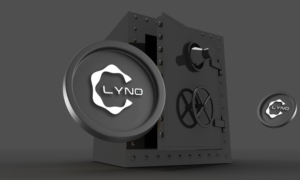In today’s evolving energy landscape, the quest for alternative sources of oil and gas has never been more pressing. As easily accessible reserves deplete, the industry is compelled to delve deeper, exploring the hidden recesses of the Earth. This intricate exploration and innovation are where the role of geoscientists like Swastika Nevaskar, PhD, shines.
Armed with data science tools, the geoscientist turned data scientist has spent over a decade navigating this complex terrain, leveraging her unique blend of geological expertise and data-driven insights. Dr. Nevaskar exemplifies the fusion of traditional exploration methods with cutting-edge technology, leading the charge into the uncharted depths of the planet’s reservoirs.
One specific project highlighting Dr. Nevaskar’s experience was her leading role in ExxonMobil’s data processing/acquisition group, where they conducted a proprietary exploration seismic survey in Kurdistan. According to Dr. Nevaskar, this Kurdistan seismic data survey aims to assess the potential for hydrocarbon reservoirs. Though filled with myriad challenges, this project became a canvas for her, providing a clearer picture of the subsurface, guiding ExxonMobil’s exploration endeavors, and contributing millions of dollars in savings.
The Seismic Landscape of Kurdistan
With its rugged topography and complex subsurface structures, Kurdistan has always posed significant challenges for seismic data acquisition. According to Dr. Nevaskar, the region’s fold and thrust belt structures, combined with hard rock in some blocks, made it a formidable task to drill shot holes to greater depths. This restricted energy penetration deep into the Earth was essential for generating subsurface reflections.
Dr. Nevaskar observes, “The signal-to-noise ratio was notably low, making data interpretation even more challenging. But we pursued because we believed the potential hydrocarbon reservoirs lay within that noise.”
It is in this complex exploration that the geoscientist’s expertise became pivotal. Her leading role as a processor in processing seismic data from Kurdistan’s blocks, namely the Pirmam, East Arbat, Betwata, and Qara Hanjeer blocks, was instrumental, as it marked the first kind of survey across these four exploration blocks.
Delivering Business Value Through Seismic Expertise
As part of ExxonMobil’s data processing group, Dr. Nevaskar worked very closely with the data acquisition group and was at the forefront of helping design intricate in-field survey elements, such as the Kurdistan survey project. Her profound understanding of complex 2D land-based data processing from diverse blocks was essential for evaluating potential hydrocarbon reservoirs.
Dr. Nevaskar’s commitment to delivering high-quality seismic images and rigorous approach to noise reduction, statics correction, and velocity analysis ensured that the integrity of the data remained uncompromised. Her expertise became evident as she meticulously calibrated receiver offsets and source frequencies, ensuring every seismic echo was captured with utmost clarity. These high-quality images were pivotal in refining geological models, providing ExxonMobil with the clarity needed to make strategic decisions.
However, Dr. Nevaskar emphasizes that the seismic survey in Kurdistan was not just about data and seismic image acquisition but also about translating that data into actionable insights. Her contributions provided correct earth images for operational decisions and workshop presentations on the standardization of process quality control. The insights gleaned from her work also illuminated new avenues for exploration, shedding light on previously hidden opportunities in the region.
In Kurdistan, Swastika’s contributions were outstanding. She showcased her expertise in analyzing land-based data from various blocks, which is crucial for assessing potential hydrocarbon reservoirs. Her skill in producing high-quality seismic images played a key role in refining geological models. This provided essential insights for making informed business decisions about acquiring new land areas. Thanks to her efforts, our comprehension of the region’s geological landscape and its potential opportunities was greatly enhanced.
Most importantly, Dr. Nevaskar’s contributions and skill set eliminated the need for outsourcing, resulting in savings of tens of millions of dollars for ExxonMobil. Through her work, the company not only advanced its comprehension of the geological landscape of Kurdistan but also solidified its position as a leader in seismic exploration.
“Every seismic survey is like a puzzle, and the pieces were scattered far and wide in Kurdistan. It was our job to bring them together and make meaningful interpretations of it for the industry’s benefit,” Dr. Nevaskar shares.
A Start of a More Profound Work
Despite the significant strides made in unearthing the geological mysteries of Kurdistan, Dr. Nevaskar acknowledges the complexities and the vastness of the uncharted terrains of the region. Its vast terrains, with their rugged landscapes and intricate subsurface structures, remain challenging for many in the oil and gas industry. The complexities of the thrust belt subsurface and the challenges posed by the region’s topography mean a vast reservoir of knowledge is yet to be tapped.
Dr. Nevaskar explains, “There’s still a lot more to uncover. However, we have embarked on a journey of discovery, and each seismic image, each data point, is a stepping stone towards a deeper, more comprehensive understanding,” she asserts. The groundwork established through Dr. Nevaskar’s initial surveys provided a robust platform for future explorations, not just in Kurdistan but in other regions, too, in the future.
Bridging Geoscience and Data Science for the Industry Future
Dr. Nevaskar’s work in Kurdistan testifies to the broader shifts in the industry. With the increasing importance of data in optimizing processes and predicting trends, the role of data scientists, not just in the oil and gas sector but in other industries reliant on technology, has never been more crucial.
“Ultimately, it’s not just about the data or the technology. It’s about the stories that the Earth has to tell and our ability to listen and interpret,” Dr. Nevaskar reflected. Her work in Kurdistan is not just a testament to her expertise but also a potential for the future of the industry.
As the lines between geoscience and data science continue to blur, professionals like Dr. Nevaskar lead the way, ensuring that the sector remains at the cutting edge of innovation, ready to contribute to the needs of future generations.



































